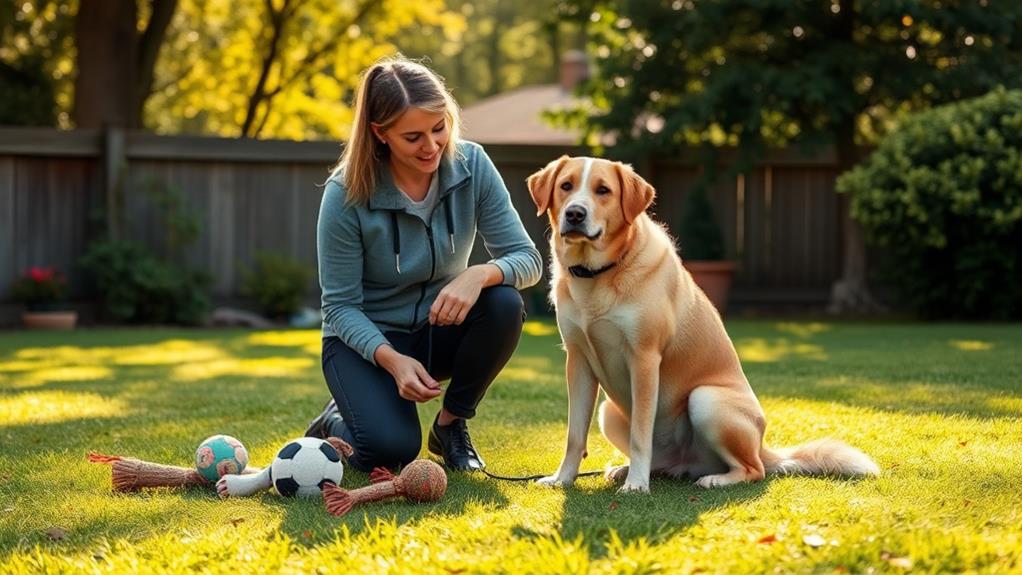To tame your aggressive dog's behavior, start by understanding their triggers. Observe them in various situations to pinpoint what causes aggression. Gradually socialize your dog in controlled environments, rewarding calm behavior with treats or praise. Establish consistent training with clear rules and commands everyone can follow. Manage your home by creating safe spaces and limiting exposure to triggers. Practice calm leadership to show confidence and encourage desensitization to feared stimuli. Always monitor your dog's body language and be patient; change takes time. Stick with these methods, and you'll soon notice positive shifts in behavior and interaction. More insights await!
Understand the Triggers
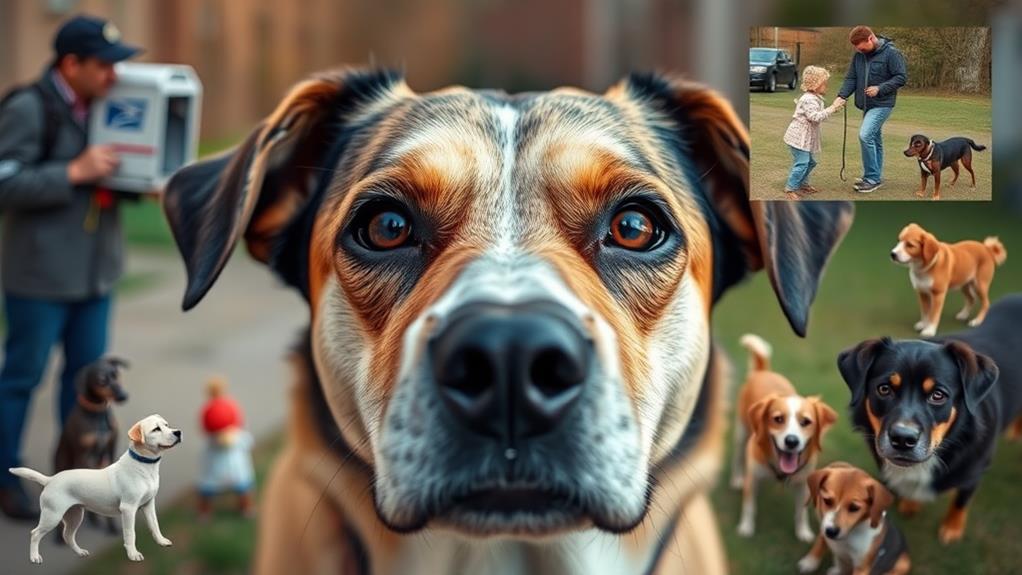
Identifying the triggers behind your dog's aggressive behavior is essential for effective intervention. Start by observing your dog closely in different situations. Pay attention to what causes them to react aggressively. Is it loud noises, certain people, or other animals? Understanding these triggers allows you to address the root causes instead of just the symptoms.
Next, keep a journal of your dog's aggressive episodes. Note the context, environment, and any specific stimuli that precede the behavior. This record will help you identify patterns and specific triggers more clearly. You might discover that your dog reacts aggressively in crowded places or when unfamiliar people approach.
It's also vital to contemplate the dog's past experiences. If they've encountered trauma or negative interactions, that history could shape their current behavior. Also, remember that fear often underlies aggression. If your dog feels threatened, their instinct may be to react defensively.
Once you have identified the triggers, you can work towards creating a plan to manage your dog's behavior effectively. Understanding those triggers is the first step toward fostering a safer, more harmonious environment for both you and your dog.
Socialize Gradually
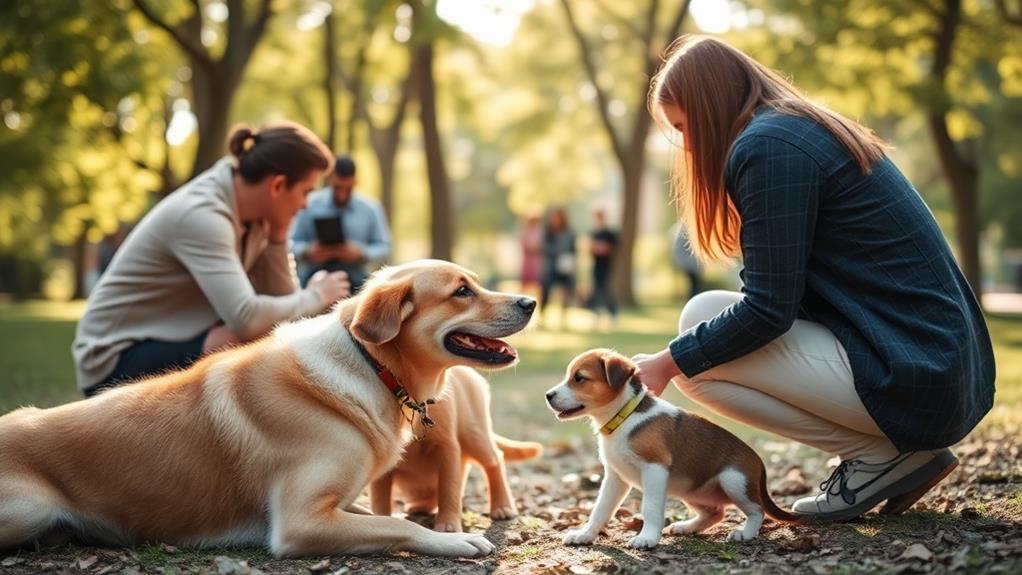
Once you've pinpointed your dog's triggers, it's time to focus on socialization. Start by introducing your dog to new environments, people, and other pets gradually. Take small steps to avoid overwhelming your dog, as sudden changes can heighten anxiety and aggression.
Begin with controlled situations. Choose a quiet park or a friend's backyard where distractions are minimal. Keep your dog's leash short, but not so tight that it adds stress. Allow your dog to observe new experiences from a safe distance. This way, they can acclimate without feeling threatened.
Slowly decrease the distance as your dog becomes more comfortable. If your dog shows signs of stress, don't push it; instead, retreat to a safe distance and try again later. Encourage calm behavior by rewarding your dog with praise or treats when they remain relaxed.
Use Positive Reinforcement
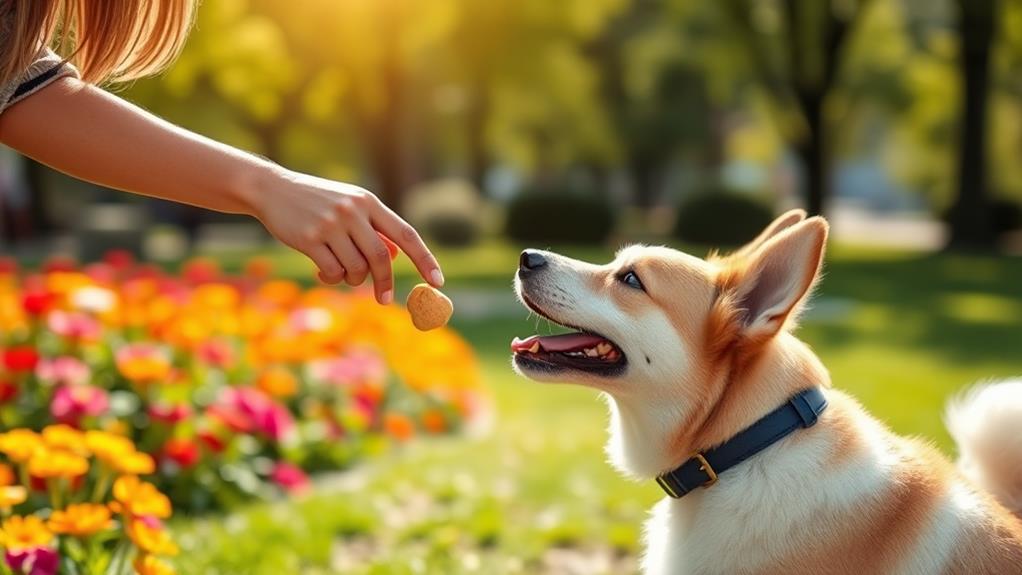
Using positive reinforcement is a powerful method to encourage desirable behaviors in your dog while reducing aggression. By rewarding good behavior, you create a positive association that motivates your dog to repeat those actions. This technique is far more effective than punishment and fosters a trusting relationship between you and your furry friend.
To implement positive reinforcement effectively, consider these strategies:
- Use Treats: Offer small, tasty treats immediately after your dog displays the desired behavior.
- Praise Verbally: Use an enthusiastic tone to praise your dog when they act calmly or follow commands.
- Incorporate Toys: Reward your dog with their favorite toy after a positive behavior, making it a fun experience.
- Practice Consistency: Reinforce behaviors consistently to help your dog understand what's expected of them.
- Keep Training Sessions Short: Engage in brief training sessions to maintain your dog's attention and enthusiasm.
Establish Consistent Training
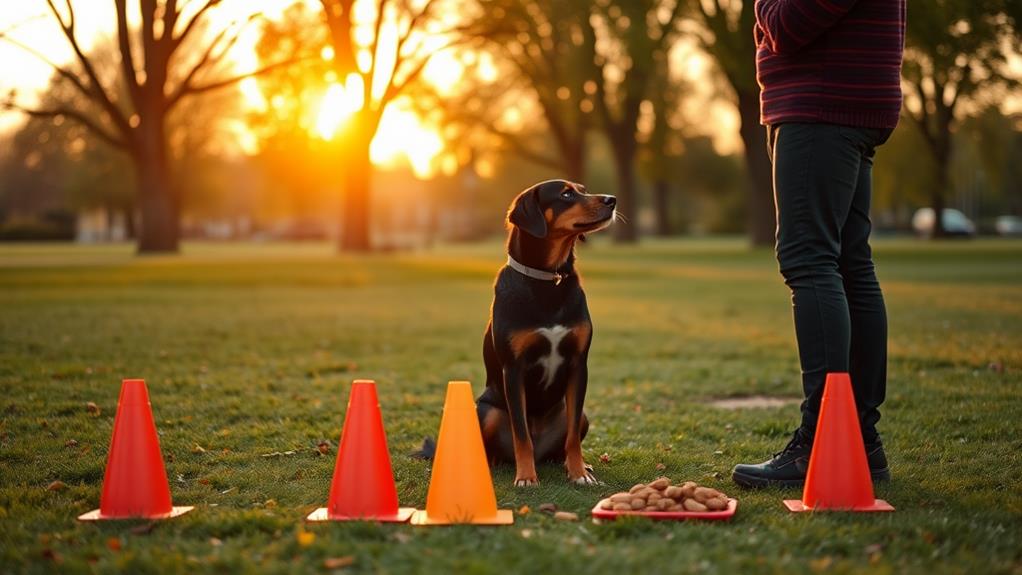
To build on the positive reinforcement you've implemented, establishing consistent training is indispensable for your dog's development. Consistency helps your dog understand what's expected and reinforces good behavior. Begin by setting clear rules and commands that everyone in your household agrees on. This way, your dog won't get mixed signals, which can lead to confusion and frustration.
Schedule regular training sessions, ideally daily or several times a week. Keep these sessions short and engaging to maintain your dog's focus and enthusiasm. Incorporate different commands and tricks to make training enjoyable. Always use positive reinforcement when your dog follows commands or displays good behavior. This could include treats, praise, or playtime.
It's also imperative to practice these commands in various environments and situations. This helps your dog generalize the behavior, making them more reliable in different contexts. Remember, patience is key. If your dog struggles, don't resort to harsh corrections; instead, go back to basics and build their confidence. Consistency in your approach fosters a trusting bond and makes your training efforts more effective, ultimately contributing to a calmer, more well-behaved dog.
Manage the Environment
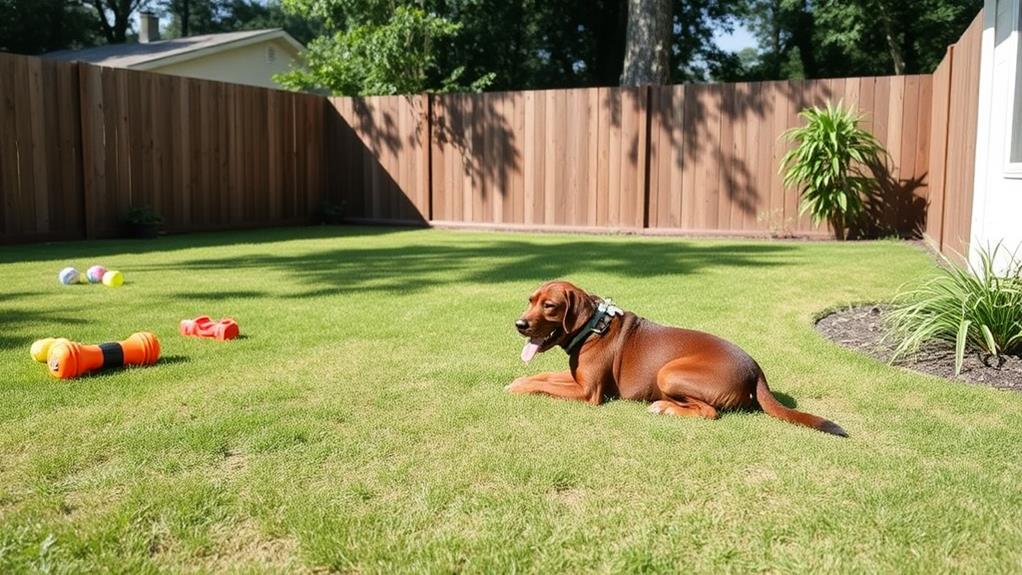
Managing the environment is essential for curbing aggressive behavior in dogs. By setting up a safe and controlled space, you can greatly reduce triggers that may provoke your dog's aggression.
Create a safe zone: Designate a quiet area where your dog can retreat when feeling overwhelmed.
Limit exposure to triggers: Identify what causes your dog's aggression (other dogs, strangers, etc.) and minimize their exposure to these triggers.
Use baby gates: Install gates to separate your dog from high-traffic areas or guests when necessary.
Control interactions: Always supervise interactions between your dog and other pets or children to prevent unwanted confrontations.
Provide distractions: Equip your environment with toys and activities to keep your dog mentally engaged and less focused on potential threats.
Seek Professional Help
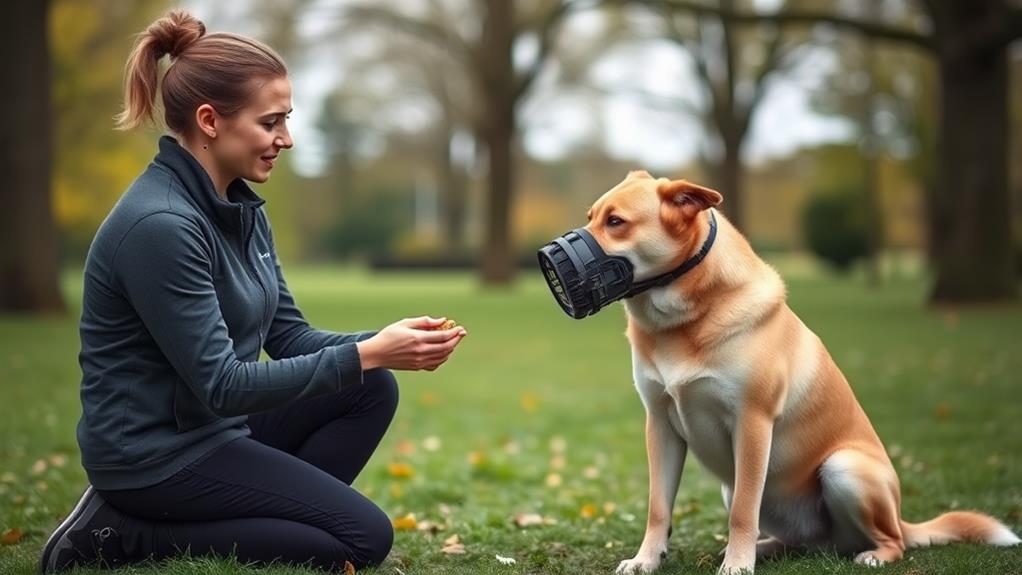
Sometimes, despite your best efforts to manage the environment, aggressive behavior in dogs can persist. When you find yourself feeling overwhelmed or unsure, it's vital to seek professional help. A qualified dog trainer or behaviorist can provide the expertise and guidance necessary to address your dog's specific issues. They'll assess the situation, identify triggers, and create a tailored plan to modify your dog's behavior.
Don't hesitate to reach out; a fresh perspective can make a big difference. Trainers who specialize in aggression can teach you effective techniques to communicate with your dog and reinforce positive behaviors. They can also help you understand your dog's body language and signals, which is essential for preventing potential incidents.
Consider enrolling in group classes or private sessions, depending on your dog's comfort level. The right professional can also support you in developing a consistent training routine. Remember, seeking help isn't a sign of failure; it shows your commitment to improving your dog's behavior and ensuring a safe environment for everyone. Taking this step can lead to a more harmonious relationship between you and your furry friend.
Practice Calm Leadership

Establishing a calm and confident presence is essential when addressing aggressive dog behavior. Your dog looks to you for guidance, and if you display anxiety or uncertainty, it can exacerbate their aggression.
To practice calm leadership, focus on creating an environment where your dog feels secure and understands your expectations. Here are some key strategies to help you maintain that calm presence:
- Use a steady voice: Speak in a low, even tone to convey confidence.
- Maintain eye contact: This shows your dog that you're engaged and in control.
- Practice consistent commands: Use clear, simple commands to reduce confusion.
- Control your body language: Stand tall and relaxed to project confidence.
- Stay patient: React calmly to your dog's behavior, even in stressful situations.
Encourage Desensitization
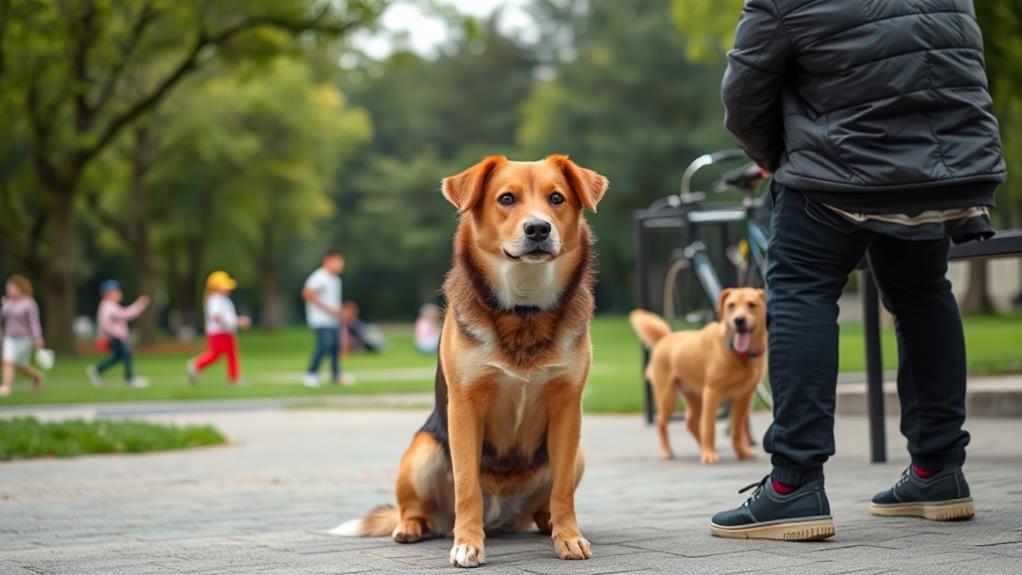
To effectively address aggressive behavior, you'll want to encourage desensitization in your dog. This process involves gradually exposing your dog to the triggers that cause their aggression, but in a controlled and non-threatening way. Start by identifying what specifically triggers your dog's aggression—whether it's other dogs, strangers, or certain noises.
Once you've pinpointed the triggers, begin with a low-level exposure. For instance, if your dog reacts aggressively to other dogs, have them observe another dog from a distance where they feel safe and unthreatened. Reward your dog with treats and praise for calm behavior during these encounters. This positive reinforcement helps create a more favorable association with the trigger.
As your dog becomes more comfortable, gradually decrease the distance between them and the trigger. Always monitor their body language and be ready to step back if they show signs of stress. This gradual exposure allows your dog to adapt and reduces their aggressive response over time. Remember, the goal is to help your dog learn that they don't need to react aggressively when faced with their triggers, leading to a more relaxed and confident canine companion.
Monitor Body Language
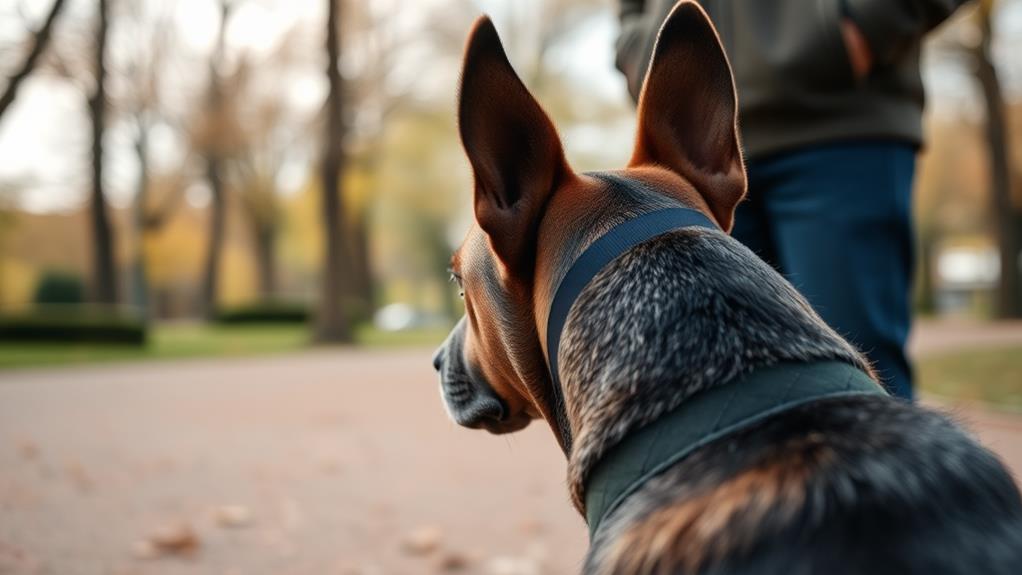
Understanding your dog's body language is essential in managing aggressive behavior. Dogs communicate a lot through their posture, facial expressions, and movements, so learning to interpret these signals can help you intervene before aggression escalates. By closely observing your dog, you can identify triggers and potential signs of discomfort or aggression.
Here are some key body language cues to watch for:
- Stiff posture: Your dog may stand tall with a rigid body, indicating tension.
- Raised hackles: Fur standing on end along their back can signal alarm or readiness to confront.
- Growling or snarling: These vocalizations often indicate discomfort or warning before aggression.
- Avoidance behaviors: Turning away, tucking the tail, or cowering can show fear or anxiety.
- Direct eye contact: A hard stare may be a challenge, while looking away can demonstrate submission.
Stay Patient and Committed
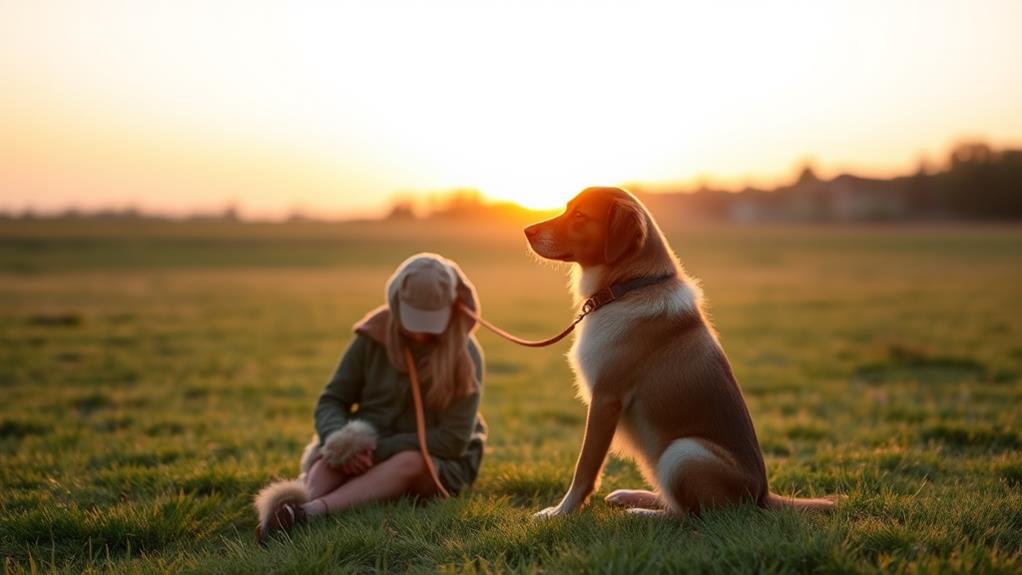
Taming aggressive dog behavior requires a blend of patience and commitment. You're embarking on a journey that won't yield instant results. Recognizing that change takes time is crucial. Your dog might've ingrained habits that won't disappear overnight, so you need to stay dedicated to the process.
Consistency is key in your training efforts. Set a routine for training sessions, ensuring you stick to it. This regularity helps your dog understand expectations and build trust with you.
Celebrate small victories, and don't get discouraged by setbacks. Each step forward, no matter how tiny, is progress.
When frustrations arise, take a deep breath and remind yourself of the long-term goal. Your dog senses your emotions, so staying calm and focused can create a more positive environment.
Engage in positive reinforcement techniques, rewarding good behavior instead of punishing bad behavior. This approach fosters a stronger bond and encourages your dog to learn.
Frequently Asked Questions
What Breeds Are Most Prone to Aggressive Behavior?
Certain breeds, like Pit Bulls, Rottweilers, and Doberman Pinschers, are often perceived as more aggressive. However, it really depends on individual temperament, training, and socialization. Always assess each dog on its own merits.
Can Aggression in Dogs Be Cured Completely?
You can't always completely cure aggression in dogs, but with consistent training, socialization, and proper management, you can drastically reduce aggressive behaviors. Patience and dedication make a big difference in your dog's progress.
Are There Specific Age Groups More Affected by Aggressive Behavior?
Yes, specific age groups can exhibit more aggressive behavior, particularly younger dogs and those in their senior years. You'll often notice increased aggression during adolescence as they test boundaries and assert their independence.
How Long Does It Typically Take to See Improvement?
You might see improvement in your dog's behavior within a few weeks, but it often depends on consistency, the dog's temperament, and the training methods you're using. Patience and commitment are key to success.
What Are the Signs of Fear-Based Aggression in Dogs?
You might think aggression's just bad behavior, but fear-based aggression often hides underneath. Look for signs like cowering, growling, tucked tails, or avoiding eye contact. These indicate your dog's anxiety and need for reassurance.
Conclusion
Taming an aggressive dog isn't just about discipline; it's about building trust. While it might feel overwhelming at times, remember that every small step forward is a victory. You're not just managing behavior; you're nurturing a bond that can transform fear into friendship. Embrace the challenges, and celebrate the progress. With patience and commitment, you can turn aggression into affection, proving that love and understanding can conquer even the fiercest instincts.

